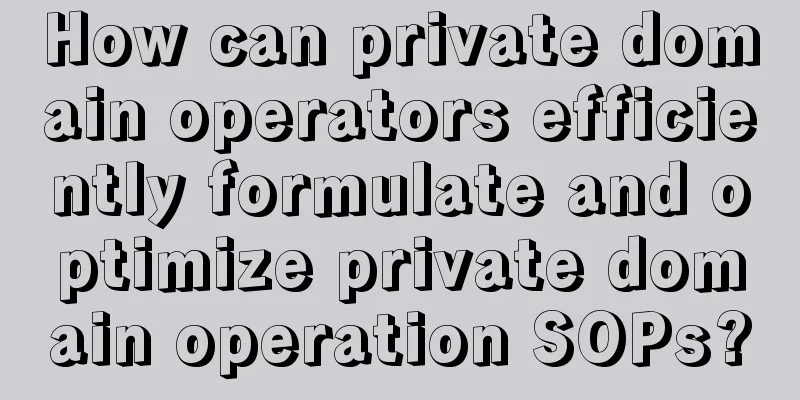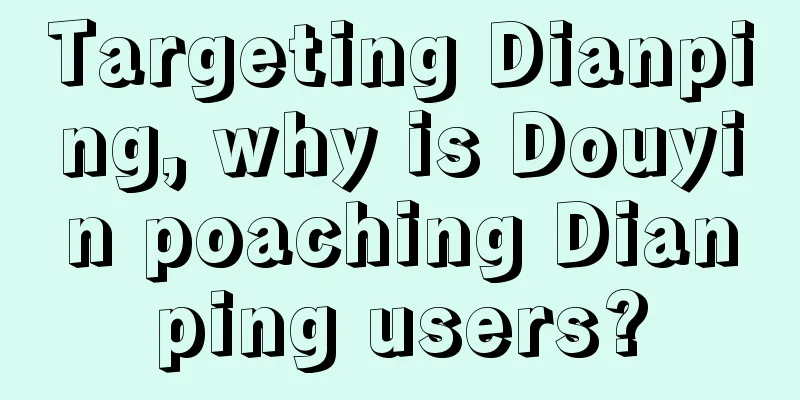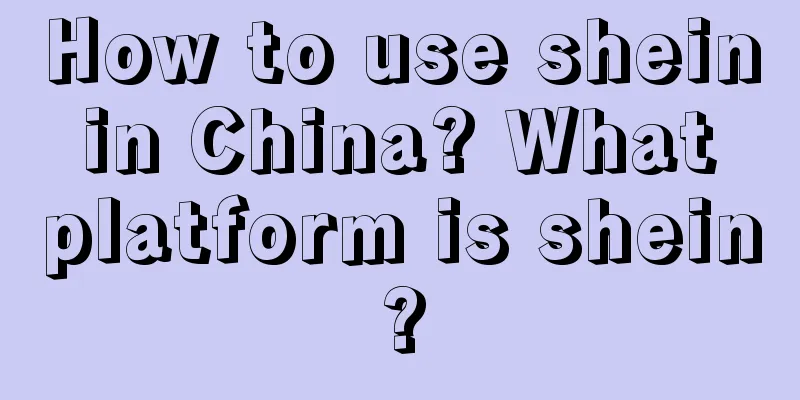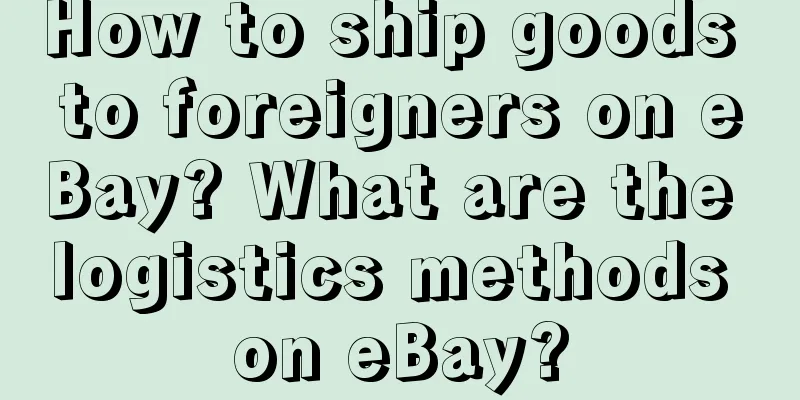How can private domain operators efficiently formulate and optimize private domain operation SOPs?

In private domain traffic, enterprises need to establish direct connections with users. Therefore, this requires us to put forward higher requirements on the manpower and quality of operation services of private domain operations. At this time, if enterprises want to solve the problem of large-scale growth of private domain traffic, they need standardized operation manpower and capabilities, which is the so-called need to formulate corresponding SOPs. 1. Why is it necessary to formulate a private domain SOP?1. What is SOP?The so-called SOP (Standard Operation Procedure) describes the standard steps, specific content and requirements of a certain job in a unified process and format to guide and standardize daily work. The private domain SOP is a standard operating procedure for private domain operation scenarios and improving private domain work results. To put it bluntly, it is the systematic operational actions to be carried out in each module of the private domain operation system. To sum it up in one sentence: what role, in what scenario, at what time, in what form, what operational actions to achieve what goals? This is the core of private domain SOP. 2. The significance of SOP formulationIn fact, in the process of private domain development, because the goal of increasing traffic scale and conversion monetization is achieved, more private domain operation employees and higher private domain operation efficiency benefits are needed. At this time, SOP is needed to plan operation process methods and improve labor efficiency. Therefore, we can briefly summarize that for the entire private domain marketing, the formulation of private domain SOP has at least the following four values:
This is the fundamental reason why we say that private domain marketing must have an SOP. 3. Classification of SOP in private domain operationsIn the entire private domain marketing system, there are actually many types of SOPs, including SOPs corresponding to different private domain carriers, SOPs for private domain team management, SOPs across departments within the enterprise, etc. We can focus on private domain traffic carriers and make a rough classification around the three modules of attracting new users, retaining users and increasing frequency, and converting and monetizing: For example , for this carrier:
In this way, we can clearly know which SOPs we need to build for our private domain marketing. Although these seem to be a lot, the underlying logic of SOP formulation is actually the same. 2. Three Elements of Private Domain SOPWe need to know that the three most important core elements of an SOP can also be said to be the three conditions that a reasonable SOP must have. They are process, content and standard. 1. ProcessIncluding things like time flow, step flow, etc. Because we make SOPs, not for one or two people, it is for everyone to understand! For example, if one thing is divided into three steps, you can't write the third step first, and then the first step. If you don't fill in the content according to a certain time or step sequence, people who don't know, or colleagues who have just taken over, will feel confused. They don't know what you mean, and then your SOP loses its meaning. 2. ContentThe content here is actually what you need to do specifically, including what kind of people, in what scenarios, what kind of operational actions need to be taken at what time, etc.! The content here must be as detailed as possible. Even when you first formulate it, your content can be a little verbose, which is okay. The key is to make things clear and don't leave anything out. 3. StandardsSpecifically, it refers to the acceptance criteria for a certain operation you perform. For example, the requirement is that after a user adds a WeChat Enterprise customer, the first communication with the user takes place within 24 hours. Another example is that WeChat Enterprise is required to maintain at least 3 communications with the user per week. The 24 hours and 3 times per week here are specific execution standards. The purpose of setting standards is to let us know what measures we should take when something happens during specific operations. With specific implementation standards, we can also know what the corresponding rewards and penalties are. These are actually quantifying many non-quantifiable things in private domain operations. This is of great significance for improving operational efficiency, managing private domain team members, etc. Process, content and standards are the three key core elements of the private domain SOP. Similarly, we can also use these three dimensions to examine the SOP we have formulated to see whether it meets these three conditions, so as to judge the rationality of the SOP. Including the subsequent iteration and optimization of the SOP, in fact, it is also carried out around these three elements. 3. Specific process of formulating private domain SOPNext, let’s explain in detail how to formulate a private domain SOP. Generally speaking, we can divide it into four steps: 1. Clarify the main path of private domainIn the previous content, I said that the most important thing for starting a private domain is MVP testing! That is, the minimum viable path, which includes three parts: traffic generation, retention, and conversion, as well as key user touchpoints. Of course, due to different formats, different brands, and even different target groups, their paths may be different. So if we want to formulate a reasonable SOP, we must first sort out our own private domain operation path. Only in this way can we combine our actual business to specifically disassemble the SOP and implement it at every key link in the operation path. In fact, a complete private domain SOP requires that every key node on the operation path needs to be managed by SOP. In actual business, if you are just starting out, it may not be so perfect, so it is recommended to prioritize the formulation of SOPs in those areas that are more labor-intensive or have relatively low labor efficiency. For example, community operation is a job that is more labor-intensive. Of course, you can also choose places with the highest monetization efficiency or operational efficiency, and prioritize the sorting and output of SOPs. For example, the one-on-one private chat SOP for enterprise WeChat customer service. Therefore, you should first select the key node on the path to sort out and produce the SOP. There is no standard answer to this. You can sort it out based on the actual business needs of the enterprise and the private domain operation goals. 2. Build a branch pathAfter sorting out the private domain operation path, the next step is to build a branch path on the main path. For example, let’s take the maternal and infant brand mentioned above as an example. Its minimum feasible path is to attract traffic through WeChat, retain users in the community, convert users through mini programs, and finally do fission based on the community. This forms a minimum feasible closed loop. In these key links, we can further refine them. For example, in the WeChat account traffic generation link, users can add WeChat accounts through public platforms such as JD stores by scanning QR codes. Then the WeChat account will automatically reply to users with content, such as simple conversations or user surveys, and send automatic questionnaires to stratify and label users. After that, the community QR code will be pushed to guide users to join the group. When users enter the community, there will be some regular means of activation, including greetings to new members, daily check-ins, community activities, daily content push, etc. to ensure the user's activeness in the community. In the conversion stage, the main thing is to push a product coupon in the community first, and then guide the user to jump to the mini program to make an order conversion. At the same time, users will also be encouraged to post their orders in the community. Finally, community fission is achieved through event planning, such as inviting friends to join the group to receive extra coupons, or through mini programs to help place orders and group orders, etc. This is its entire private domain path map. Among them, from the public domain platform to corporate WeChat, then to social groups and mini-programs, this is its main path, and the user behavior paths involved in each traffic carrier are branch paths. Again, no matter whether it is a main path or a branch path, it needs to be designed according to its own business format, products, and even private domain operation goals. Moreover, the path map is not fixed and needs to be continuously iterated and optimized. Okay, after building the main path and the branch path, our entire private domain operation map is actually completed. The advantage of doing this is that it allows us to have a very clear understanding of the entire private domain operation landscape, and know which key nodes in the process require interaction with users, and which key nodes require our team members to do content planning. 3. Screening key nodesThe third step is to select the key nodes based on this panoramic view of private domain operations and use it to draw a timeline horizontally. How to do it specifically? Let’s continue to use this case to illustrate. In this case, through its private domain panorama, we can know that the key nodes roughly include:
The above are the key nodes selected from the entire private domain operation panorama, as well as the key operational actions we need to take at the key nodes. 4. Pull out the timeline horizontallyNext, we will sort these contents according to the time sequence, that is, determine what to do first and what to do next, and what is the order of priority! For example, after a user follows the WeChat customer service account, we should first push a brief introduction about the company, then push a questionnaire, and then push a community QR code, and inform the user of the benefits of joining the community, such as being able to receive coupons in the community, etc. This is the order of the content of the automatic reply to the WeChat customer service account of the enterprise. It is not pushed randomly, nor is the copywriting content thrown out all at once. It has a rhythm, pushing what comes first and what comes next. The same principle applies to other key nodes. Here, you can actually plan from the user's perspective. When the user reaches this step, you want the user to be exposed to certain content first and then to be exposed to certain content. Or you want the user to do certain things first and then to do certain things. After knowing this, you will know what your specific guidance sequence should be. In this way, we can draw a horizontal timeline for each key node, which is very important for us to formulate specific SOP content later. 5. Fill in the core contentIt is to fill in specific content at the key nodes on these timelines. The content here includes but is not limited to:
The above are the specific contents we need to fill in. To sum it up in one sentence, it is about who does what, when, and in what way. In fact, if we look back at the entire SOP formulation process, if the first step of building the main path is to clarify what specific goals we want to achieve? For example, from corporate WeChat to social groups, its core purpose in this process is to achieve user activity, and from social groups to mini programs, its core purpose is to achieve user conversion. The second step is to build branch paths based on the main path to clarify the specific scenarios. The third step is to screen out key nodes through the entire private domain operation panorama, and draw a timeline on each node to determine the specific time. The next fourth step is to fill in specific content on it, including but not limited to matters, time points, content, executors, and specific precautions, etc. These are actually to supplement what specific roles, what form, and what specific operational actions to carry out. Well, the above is the specific process and steps for formulating a private domain SOP. Next, I will use a case to further analyze it in detail. 4. Private Domain SOP Development Case ReferenceNext, let’s use a case to further analyze it in detail. The following case is about a private domain of a beauty and skincare company, which planned a private domain community fission promotion activity. When this company approached me to do it, it actually had another core purpose, which was to migrate friends from personal WeChat, social groups and other channels to the company WeChat. Therefore, the main target users of this activity were friends from the original social groups or personal WeChat. The whole activity is actually quite simple: it is to preheat the activity through existing social groups, personal WeChat Moments and other channels. All users who are interested in participating in the activity can follow its corporate WeChat customer service account and then get a personal exclusive poster. At the same time, they will be guided into a new community. Then users can share posters to attract new users, who also follow the corporate WeChat customer service account first, then enter the community, and conduct sales conversion through script promotion. The above is the background of the entire activity and a brief introduction. Next, let’s take a closer look at how we can formulate a reasonable SOP for such a private domain community fission activity. 1. Clarify the private domain operation roadmapFirst of all, the first step is to design a rough activity link based on the activity form, that is, the operation roadmap. According to this activity link, we can roughly divide the entire activity into five stages:
2. Screening key nodesNext, based on the overall chain of the activity, we need to find out several key links. The first step is the preliminary preparation for the event. The second step is the warm-up phase of the event, where there is an event to reach customers. The third key step is for users to add the WeChat customer service number; the fourth step is for new users to join the community; and the last step is to conduct an event promotion in the community. These five are the most critical links in the entire activity chain. Next, we need to list the important work items that may be involved in these five key links one by one. 1) The most important content of event preparation includes material preparation, selection of promotion channels, function configuration and testing, and the establishment of new fission communities, including community staffing. These tasks are the core work content that needs to be focused on in the key link of event preparation. 2) Reaching customers In the process of reaching users through activities, the most critical thing is to promote it in personal WeChat Moments, including private chats with some important seed users, as well as exposure and promotion of the activities within the original community. 3) The most important thing for users to add WeChat Enterprise is to set up an automatic reply for WeChat Enterprise customers, including pushing user-exclusive sharing posters and guiding users into new communities. 4) User joining the group When a user joins a new community, there are several things to focus on in this link. The first is to set a welcome message for new users after they join the group. Secondly, because some users directly join the community through community fission, there is also a need for guidance on the content of the activity. So, to sum up, the core of this link is to do a good job of guiding new users in the community. 5) Community Promotion Finally, in the community promotion link, the core is to do a good job of user conversion content, including community activity content, 1-on-1 private chat with key customers on the WeChat customer service number to force orders. Well, the above are the key work contents that need to be done in the key core links based on the entire activity operation path map, which can also be regarded as important modules. 3. Fill in the core contentNext, we will fill in specific content for each important module. Including specific matters, work content, such as copywriting, poster language design, and who is the specific executor? When is the specific time point, what form is used, etc. Then, we sort these contents in chronological order. 1) Filling in the content of the material preparation module <br /> For example, let’s look at the first activity preparation link. In this link, our key modules mainly include material preparation, selection of promotion channels, function configuration and testing, and the establishment of new fission communities, including community staffing. The materials we may involve in the entire event may include event promotion posters, task fission posters, and offline promotional materials. These are the specific work items, and the next is the specific content, that is, the words, copywriting, and posters. Including specific time requirements and so on. For example, for the event promotion poster for old customers, we prepared such a wording, and for the task fission poster, we prepared another copywriting wording. Then for each work item, you can make a note of what you may need to pay attention to. For example, for a pre-event poster for old customers, it needs to highlight the interests of old customers and have product endorsements, such as focusing on a certain effect, or having a recommendation from a certain big V. Then, the specific method and time of participating in the event need to be clearly marked on the poster, etc. In addition, the overall layout design, size requirements, etc. can all be included in this note. Once we have filled in all these contents, the SOP for material preparation in this module is actually completed. Next, we only need to produce the relevant materials according to the content requirements! Such an SOP not only tells us what needs to be done and when, but also makes it very clear to other team members. When our operators send this SOP to, for example, designers, they will know how many posters I need to design within a certain time, what the requirements are for each poster, what the corresponding copy content is, and what needs to be highlighted. Designers will know it very clearly at a glance. Such an SOP is a complete one. 2) Fill in the content for the new community <br /> Of course, this SOP is only formulated for the material preparation module in the activity preparation phase. Next, we need to fill in the specific content for other important modules in other links to form an SOP. For example, building new communities Its specific work content includes setting up a welcome message for new members, formulating group norms, setting up automatic group replies, group announcements, group taboos, etc. Then, for each work item, the specific words of speech must be filled in clearly, such as setting up a welcome message for new members, what the specific words of speech are, what the specific content of the group announcement is, and what the specific copy content is. Then, for the personnel management module for the new community, what are the main roles in this group? For example, there are group owners, group managers, KOCs, water army, etc. What is the positioning of each role? What is the main role in the community, etc., fill in all these clearly. In this way, the SOPs for the two modules of new community building and group personnel management are completed for the event preparation link. 3) Content filling for the activity promotion module <br /> For the user reach link, the most important core module is the activity promotion in the micro circle of friends. It’s the same for this link. We just need to fill in the content that needs to be promoted one by one. For example, let’s look at this screenshot: This is the SOP for preheating the Moments. It mainly includes the specific time points, that is, at what time points every day do you want to push content to your Moments, what the specific content format is, such as pure copywriting, or copywriting + poster format, whether this poster is an event promotion poster, or a draft of the content of related products, etc., write it clearly, and then what the specific copywriting is. Then sort it from top to bottom according to the order of a timeline, so that you can form an SOP for preheating the Moments activity. By the same token, when we promote activities in the company's existing communities, the SOP is the same. We need to specify the specific time of sending the content, the form of the content, the specific wording, copywriting, etc., and then the SOP for this module will be completed. 4) Content filling for the community group buying chain module The content of the activities here is mainly to stimulate users to place orders through the form of group buying. Then we sort out the process of the entire group buying activity. For example, the activity starts at 20:00. The first step is what we are going to do. The specific content, copywriting, and rhetoric should be clearly written. Then, how should each role in the community cooperate with each other? For example, what kind of content should the group leader send to inform the start of the activity, and then push a piece of copywriting. How should the water army cooperate next? To liven up the atmosphere, it may be necessary to send a user testimony content. Then prepare the relevant materials, copywriting, and posters, and then at what time and which account to push, including the product of the activity, what is its selling point, what is the price, etc., write all these clearly, and the SOP for the activity is completed. In fact, the formulation of SOP is not that difficult! It is just a little complicated because it involves a lot of content and is also more detailed. However, its basic formulation logic is very simple, which is four steps: Draw the main path and branch path diagram according to the operation path, then find the key links, find the core key modules on these key nodes, and finally fill in the specific content for these modules, including specific work items, time points, words, copywriting, posters, etc., as well as specific executors, precautions, etc. In this way, the SOP can be formulated. It is no exaggeration to say that almost 90% of SOPs can be formulated based on this process, and their underlying logic is the same. 5. More ways to formulate private domain SOPIn addition to the method we just mentioned, there are actually other methods for formulating SOPs. I will briefly introduce two of them, which may be more commonly used in the private domain marketing system. 1. Develop SOPs based on a timelineThe SOP formulation method we just talked about is based on the operation path map. The method we are talking about now, as the name suggests, is based on the timeline, that is, the time dimension to formulate the SOP. This method is basically used in certain specific projects. Its specific method can be roughly divided into three steps: The first step is to divide the entire project according to the time dimension, such as the first day and the first stage. The second step is to list the important things to do at each time point. The third step is to fill in the specific content for these items, including specific work content, script copy posters, time points, executors, precautions, etc. This step is actually the same as the last step of the first method. Let me give you an example: the one below is a course trial promotion activity planned by an education company. The entire activity cycle can be divided into three stages: the activity warm-up stage, the activity launch stage, and the activity closing stage. There are three trial classes, and then one free trial class every day. In this way, the entire activity, that is, this project, can be specifically divided into 11 nodes according to the time dimension. The active warm-up phase includes 3 days, 2 days, and 1 day before class; Then the activity start-up phase includes the first trial class on the first day, after the first class, the second trial class on the second day, after the second class, and the trial class on the third day. Finally, after the three-day trial class is over. In this process, there will be four key time nodes, namely the first day, second day, third day and fifth day after class. The next step is to list the important matters in each node. For example, 3 days before the class, which is the first node, the main thing to do is to warm up the event. The event promotion is mainly through SMS notifications through the OA system. The specific words and texts that may be involved are clearly written in it, including the specific time point of the push. Then, at the second stage, which is 2 days before the class, you need to build a community, that is, pull all potential users into a community. This involves writing group announcements, setting up guidance words for new members to join the group, and maintaining basic interactions to keep users active, right? This includes specific words and content. Then on the first day of class, there are many important matters that may need to be involved. We can continue to use the time dimension to sort them out. For example, at 13:30 noon, we will do a warm-up in the community, and the specific content and words that need to be pushed should be clearly written. Then what needs to be done at 14:00, what needs to be done at 15:00, and what needs to be done at 17:00. Then the trial class will officially begin. In this process, how do we need to interact in the community? What are the specific words and words? For example, when the trial class is over, we may need a word to transition and shift the user's attention to the formal class, right! At this time, we may need to arrange water army, of course, including the specific words and words. Then on the next day, before the second trial class, we may need to interact with the user, including a point-to-point playback, or after the first day of the trial class, there may be an after-class assignment, and the customer service will need to urge the user to submit the assignment in the community, etc. After the three-day trial class is over, you may need to conduct a conversation guidance in the community to guide users to convert to a formal course. In addition, you may need to have a one-on-one private chat with customer service for users who have not converted. What will the specific conversation language be, what will the content be, etc. OK, the above is an SOP based on the time dimension. In fact, its general logic is similar to the first method, and the specific content that needs to be filled in is also similar. The core is to clarify what role, in what scenario, at what time, in what form, and what operational actions to take to achieve what goals? The only difference is that they are based on different points. One is based on the operational path, and the other is based on the timeline. 2. Formulate private domain SOP by exhaustive methodThe last method of formulating SOP is called exhaustive method. This method usually aims at a certain detail, or a key node of a certain link, to supplement a specific content, so as to be more efficient at this node. For example, we all know that in the process of private domain operation, customer service will face a large number of users every day, asking for information about products, activities, etc. The workload is very huge. So in response to this situation, we can use the document exhaustive method to formulate the corresponding SOP so that customer service can improve work efficiency. For example, we can list the scenarios that users may face and the corresponding words and phrases. Then, we can automatically reply to the corresponding content words and phrases based on the keywords that users consult. This may require the assistance of specific tools. For example, users may have various questions about prices, so we can formulate a script for the relevant questions by presetting them in advance. Then when users raise concerns, customers can choose the corresponding script for push notification. For example, if the user has questions about the activity, we will push the corresponding content to the user. … The benefit of this is that it can greatly improve the efficiency of customer service. At the same time, in private domain operations, user feedback can be very timely, which can improve the efficiency of the entire private domain marketing as a whole. Of course, this method may need to be based on a certain data foundation to know what kind of topics users may raise in what kind of scenarios. Or for relatively mature traders, they can make a preset based on their past experience. VI. ConclusionThe above is all about the formulation of private domain SOP. Finally, I still need to emphasize that any SOP is formulated based on a certain node, or a certain business scenario requirement! Although the organization and establishment of SOP can help our private domain operation strategy to be more efficiently implemented, it can also improve the work efficiency of the private domain team. However, SOP is not static. It needs to be iterated and optimized at any time according to the actual business situation. In other words, when we establish SOP, it also means the beginning of change. As an excellent private domain operator, you must not be restricted by SOP! We need to combine various data indicators, user feedback and other content to make adjustments at any time. Author: Pai Ye Operation WeChat public account: Paiye Operation (pyyunying) |
<<: Summer's copywriting is half fire and half sea water
Recommend
Why does a 24-hour unmanned live broadcast attract 200 million viewers?
How does 24-hour unmanned live broadcast make the ...
How to use IP positioning to give vitality to the brand?
What effects can a successful IP bring? Why should...
What to do if Amazon traffic is only in the tens? How to improve it?
After opening a store on Amazon, everyone will als...
How to implement the no-source model in cross-border e-commerce? How to do cross-border e-commerce well?
With the continuous development of cross-border e-...
What are the conditions for enabling Meikeduo advertising? How to enable it?
If Meikeduo merchants want to place advertisements...
How much money can you make by selling 5,000 kilograms of tea?
In this article, the author tells readers about th...
Yiwu boss sells zippers for a few cents each, with annual sales of 30 million
This article interviews the owner of the Yiwu zipp...
Why should consumers buy from you?
Marketing behavior is to guide humans to find the ...
What is Amazon AWS? What is Amazon AWS used for?
Now many domestic platforms have launched cloud pl...
How long does it take for Shopee to ship? What are the rules?
Shopee is an e-commerce platform in Southeast Asia...
Does user growth really need to be data-driven?
In the user growth scenario, does data-driven deve...
Where is the entrance to Amazon Seller Central? How to enter?
For Amazon merchants, there is a lot of informatio...
Dong Jie made "slow live broadcast" popular
The author of this article introduces several typi...
What are the requirements for activating Lazada Quanxiaobao? Why can’t I activate it?
Lazada is also one of the cross-border e-commerce ...
What skills are necessary to operate on Amazon? What abilities are required?
After we open a store on Amazon, there are still m...









